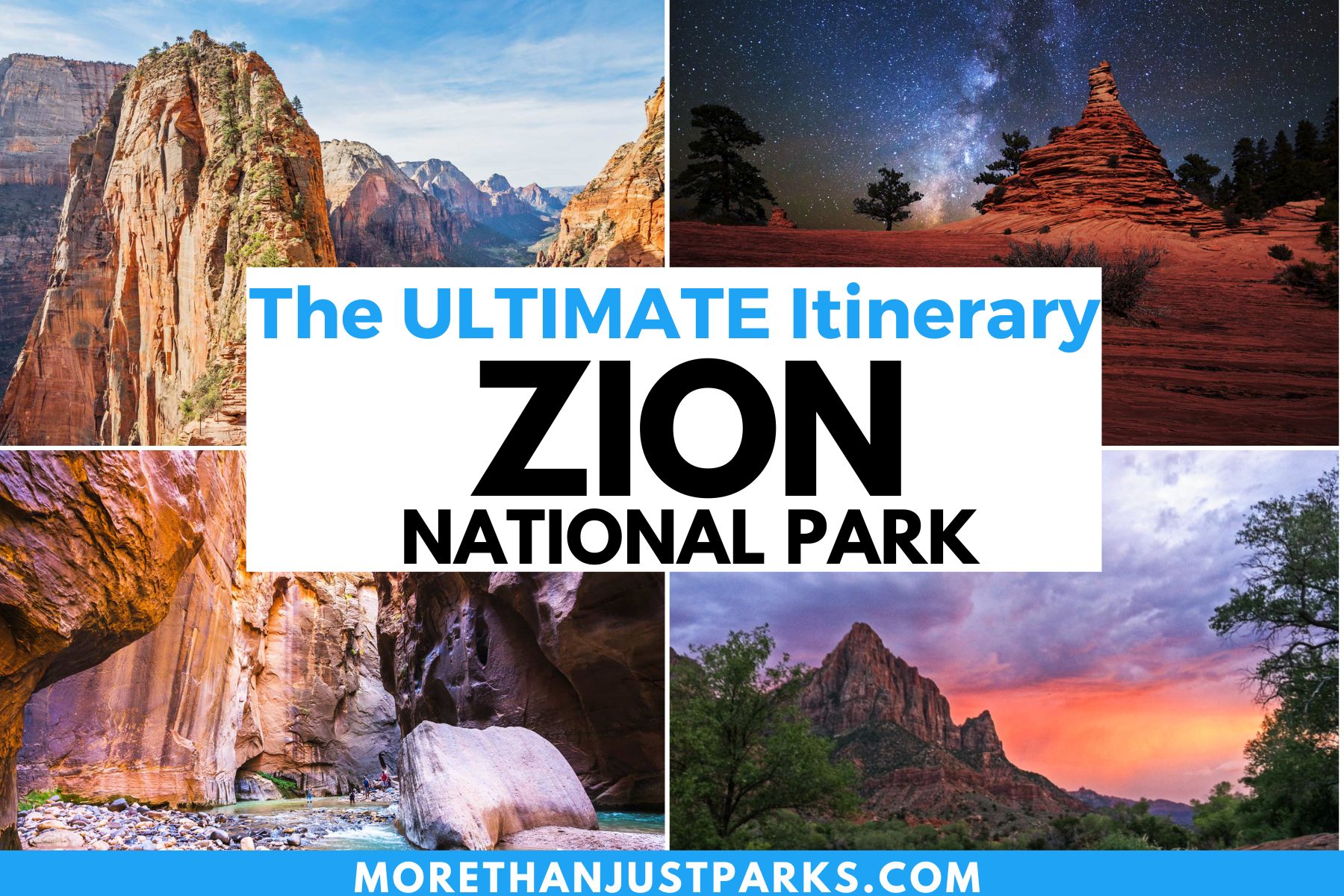
Article Overview: Visiting Zion National Park, 1 to 5 Day Itinerary
Visiting Zion National Park in Utah can be a life-changing, bucket list experience. Between stunning sunrises, incredible hiking trails like The Narrows and Angels Landing, and sensational celestial shows at night, your Zion National Park itinerary fills up quickly. But when is the best time to visit Zion National Park? How do you make the most of your trip?
You also have to plan around Zion National Park weather risks, potential closures, and your physical ability to tackle as much as possible while still finding the nirvana Zion offers.
I have a bad habit of trying to “do it all,” only to end up with blistered feet, oddly placed sunburns, and exhaustion that requires 2 to 3 days of post-trip recovery. That’s one reason it’s important for me to give you a nice mix of experiences.
Ideally, you have several days to visit Zion National Park, but I’m going to help you put together a plan that brings as many rugged adventures as relaxation days.
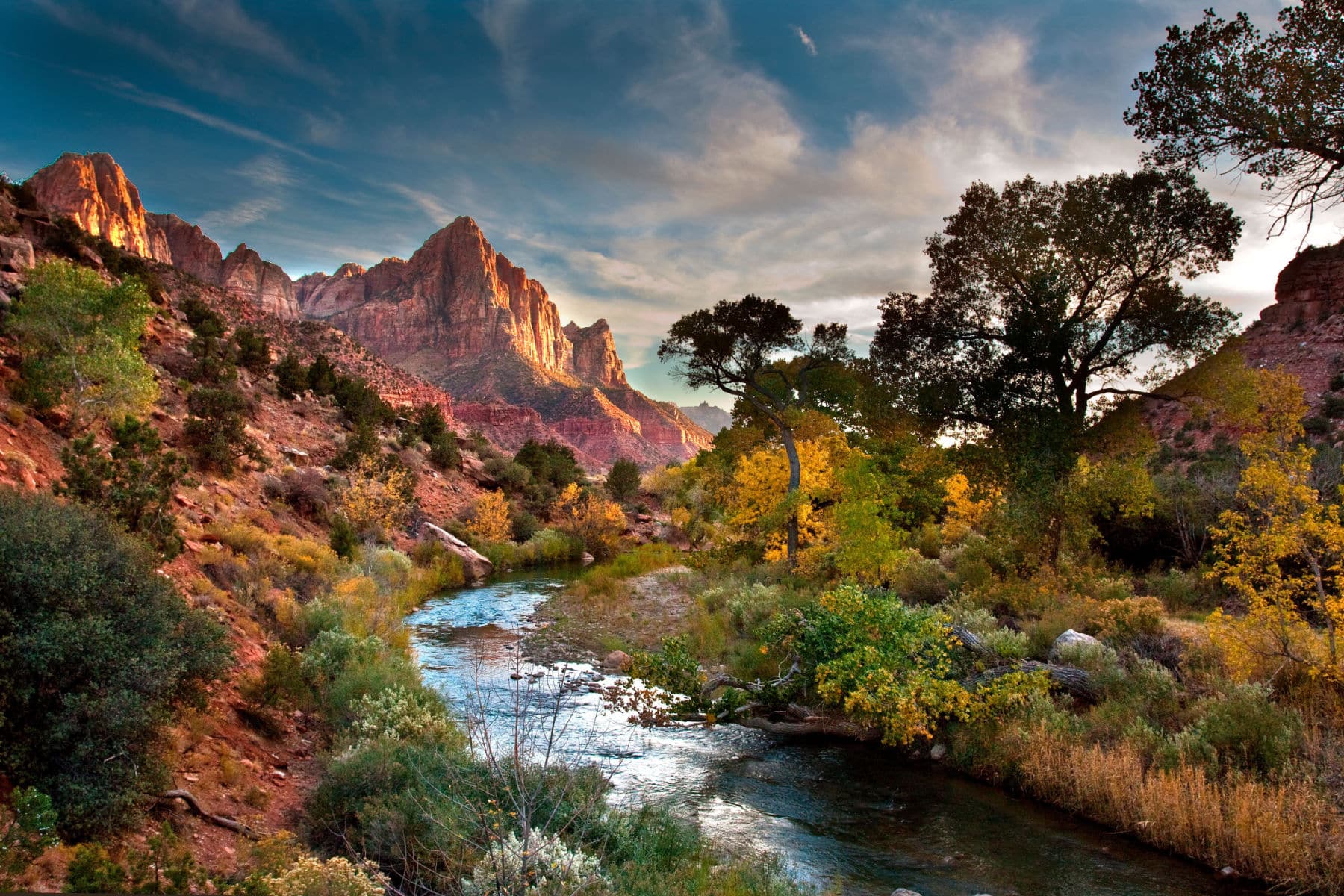
Table Of Contents: Zion National Park Itinerary
Table of contents
- 5 Quick Must-Know Zion National Park Details
- When to Visit Zion National Park
- Planning Your Itinerary Around the Zion National Park Weather
- Zion Itinerary Planning Layout
- Where to Find Zion’s Trails
- Map for Visiting Zion’s Trails
- Ultimate Zion Itinerary 1 to 5 Days
- Additional Activities to Add to Zion Itineraries
- Visiting Zion National Park Planning FAQs
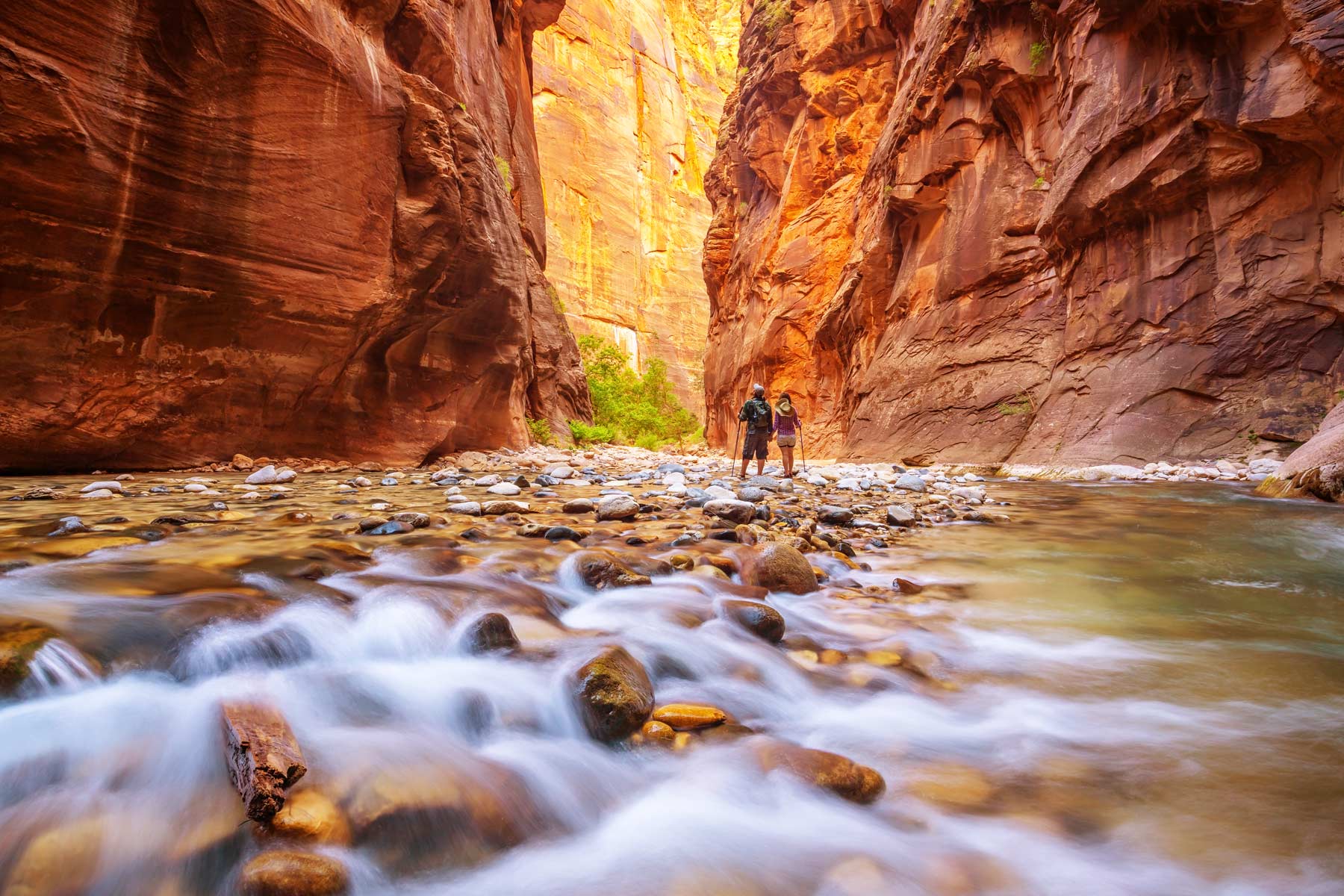
5 Quick Must-Know Zion National Park Details
- Driving into Zion National Park will cost $35 per vehicle. Walking in will cost $20 per person. Get an America the Beautiful Pass to cover entrance fees at all public lands for a full year with just an $80 price tag.
- You don’t need a permit to hike The Narrows at Zion National Park, but you will need one for Angel’s Landing. You can go as far as Scout’s Landing without a permit.
- The Zion-Mount Carmel Tunnel toll is $15 per vehicle. When the Zion Shuttle is operating, it’s free in Springdale and throughout the park. Use it as much as possible to avoid traffic and parking problems.
- Kolob Canyons offers an awesome experience at Zion National Park. However, it’s a separate entrance from the Springdale entrance. Plan to do those two sections on different days.
- I recommend you take a guidebook of the park and a map of Zion for when you’re out of mobile service range. If you need a place to stay, this is our favorite hotel near Zion National Park. If you want to get the inside scoop on the day’s activities and opportunities, have a meal at Oscars Cafe in Springdale.

When to Visit Zion National Park
Your Zion National Park itinerary requires careful planning around spring weather, summer crowds, and the monsoon season. The park is open 24/7; your Zion National Park itinerary can change based on what season you’re visiting and what permits you might need.
May, June, and July are historically the busiest months in the park. January, February, and December are the least visited months. The best time to visit Zion is as late in spring as possible before the May crowds. Aim for late April if you can. Early November might be ideal, weather permitting, because the crowd size is cut in half.
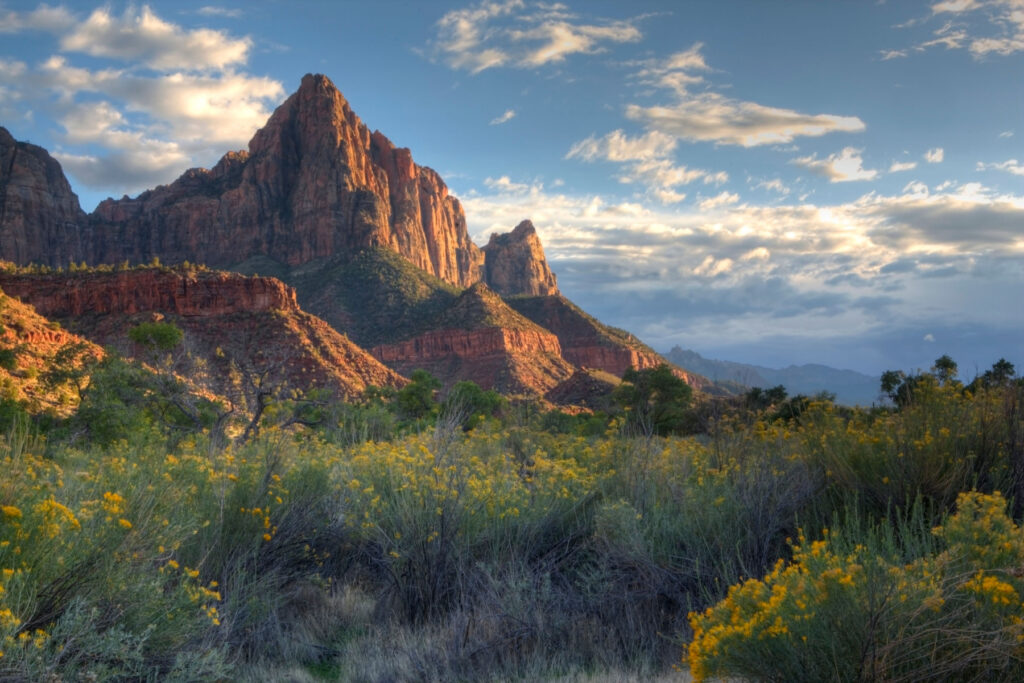
Spring Visitors
Spring brings wildflowers and snow melt as the canyons come to life after winter. This can also lead to the closure of popular places on the Virgin River due to dangerous water currents.
Some trails can still have snow and ice. Crowds will be smaller but grow exponentially as the weather warms up—plan for big temperature swings through spring mornings to evenings.
Summer Visitors
Summer is an amazing time to visit Zion, as you’ll see by the large crowds that gather. Do not attempt to enter the park after 9:00 a.m. unless you have a lot of patience.
Temperatures can regularly get above 100°(F). Summer monsoons build in the afternoon, so an early start will give you a better chance at seeing more locations without the risk of flash flooding.
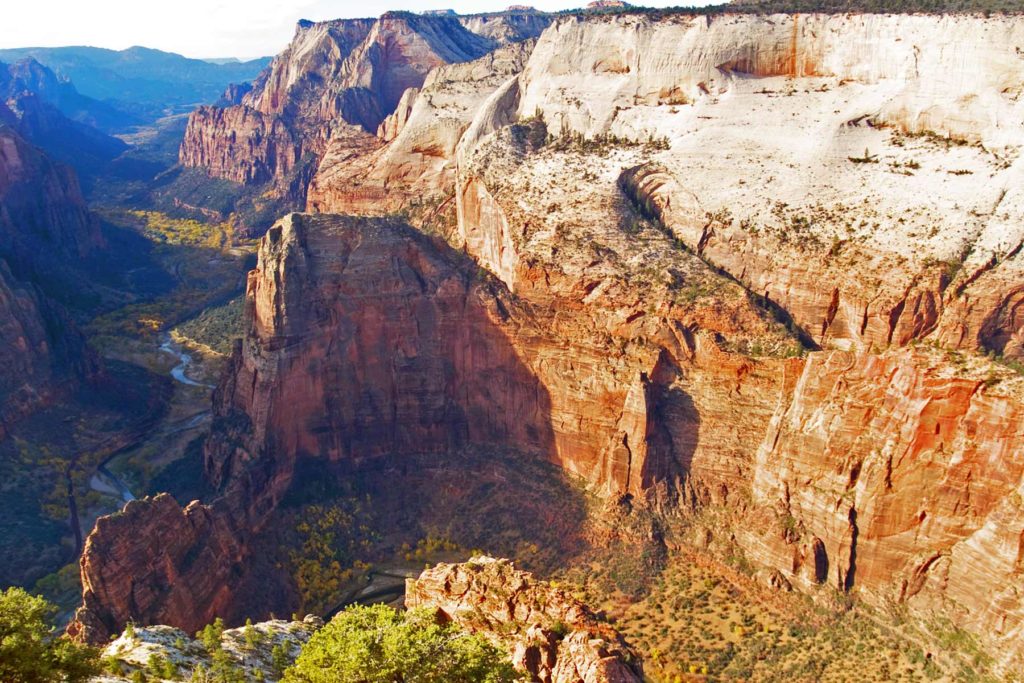
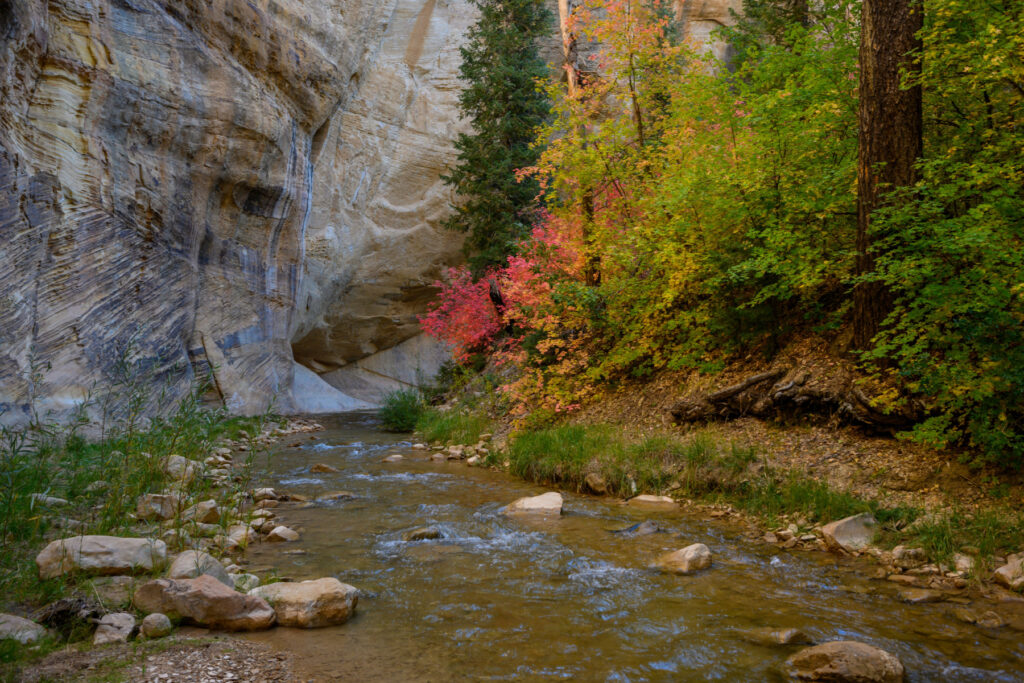
Fall Visitors
The weather cools down but can go back to big swings in temperature from morning to night. Fall foliage is at its best in mid-October through early November.
Shuttle schedules are scaled down, but crowds are much smaller. November visitor numbers drop substantially.
Winter Visitors
Temperatures during the day can still get up to 60°(F) but will be bone-chilling at night. Trails risk closure due to dangerous conditions, snow, and ice.
You also risk falling ice from thousands of feet above. The Narrows shouldn’t be attempted without a wetsuit.
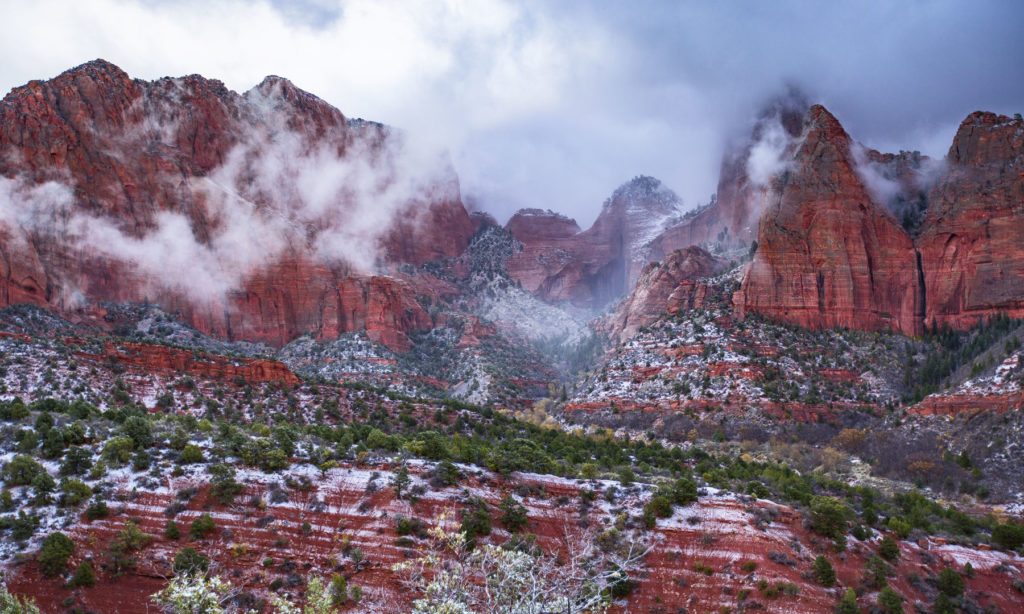
MORE: Bookmark this Zion weather condition website for updated information during your trip.
Planning Your Itinerary Around the Zion National Park Weather
Your Zion itinerary needs to be flexible enough to adapt to changing weather conditions. A few things are important to remember:
- The Narrows: This canyon is especially susceptible to closing in spring when melting snow can bring the water levels too high and dangerous for hikers. During summer, plan to tackle this hike first before storms build up overhead in the afternoon.
- Angels Landing: The lottery system will give you a time frame for your permit, which is one of the following three: Before 9 a.m., 9 a.m. – 12 p.m., and after 12 p.m. Weather effects can lead to closures due to fallen rocks or washed-out paths. Get excited, but don’t fall in love with the plan. All closures are done for the utmost safety.
- West Rim/Major Trail Systems: Some trail systems will be closed until the snow melts, which could be as late as early summer after a robust winter. Many closures won’t have an opening date, as it’s all weather-dependent.
- Wildfire Risk Anywhere in Zion: While too much rain and snow can lead to closures, not enough of it can lead to wildfires. Check with the Park Alerts section of the NPS app and @UtahWildfire before your trip and each day of the trip.

Zion Itinerary Planning Layout
I’ll let you know now that I’m a fan of the path less traveled, mostly because I think we miss out so much trying to get to the top destinations of any park.
Sure, Angels Landing is one of the toughest hikes in the world, so you have to go through a certain entrance and path to get there. But if you’re more flexible, consider all the options.
South Entrance
The south entrance is in Springdale, Utah, and is the most used entrance. It takes you to Zion Canyon. A free seasonal shuttle (more on that in a bit) takes you to the top starting points for all the amazing trails of the canyon. This is how you access the lodge, the museum, and the scenic route.
East Zion Entrance
This entrance is approached through Mt. Carmel Junction, but you’ll have to go the long way through Colorado City, Arizona, to get there. The trails of East Zion are more remote, less traveled, and underappreciated, IMO. This entrance also has many scenic pullouts to enjoy the view, like Checkerboard Mesa.
Kolob Canyon (West) Entrance
This is part of Zion but not directly connected by road to Zion Canyon. Winter closures are much more likely here, but you’ll get the same dramatic views of sandstone cliffs and canyons. A scenic drive also offers an easy way to see this part of the park without taking too much time.
Map of Zion’s Entrances
Parking When Visiting Zion
Parking near Zion’s south entrance can be hard, and several other four-letter words. You can pick a paid lot in Springdale and use the shuttle to get to the park. Very limited parking is available at Zion, even though the lots can accommodate hundreds of vehicles. To reiterate–the crowds are just that big.
As a first-timer, I’d highly recommend you just trust me (and literally anyone else who’s ever been to Zion) and avoid trying to park on your own unless you arrive at sunrise.
New in 2024: Parking in Springdale has become more than an inconvenience. In fact, it is preventing residents from getting home during peak travel times. Starting in 2024, a new shuttle from St. George to Springdale is designed to lessen vehicle traffic. That will be a relief for everyone.
Kolob Canyon has several parking areas throughout the scenic drive. Some spots might fit just a dozen cars, but the crowds here are much smaller too. There is no parking area at the east entrance, but there are pullouts along the way at trailheads and scenic spots.
TRAVEL TIP: Tune your radio to 1610 AM for Zion traffic and park information.
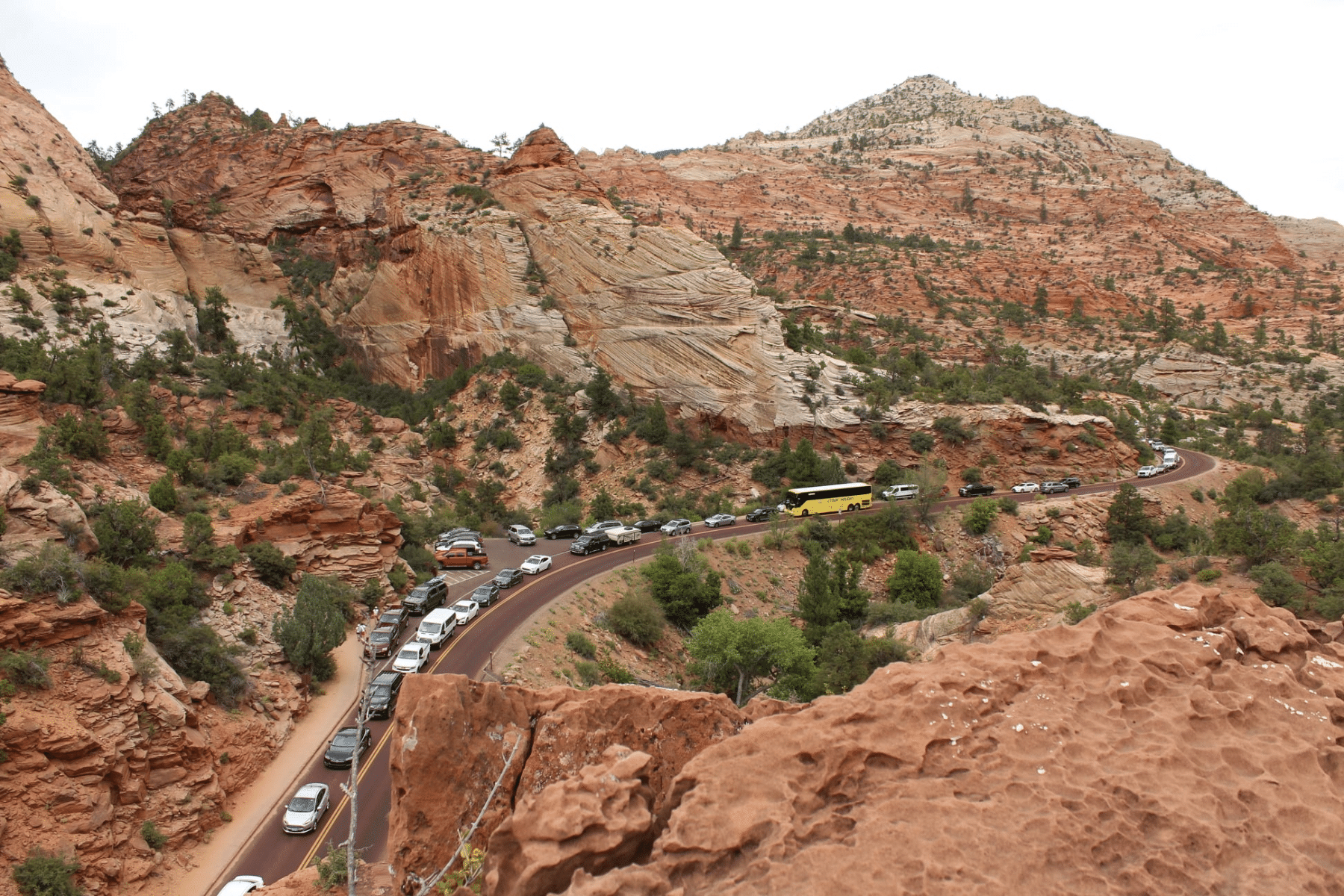
Where to Find Zion’s Trails
You have several sections of the park where there are dozens of trails to consider.
Check out some of our favorite hikes to add to your Zion National Park itinerary below.
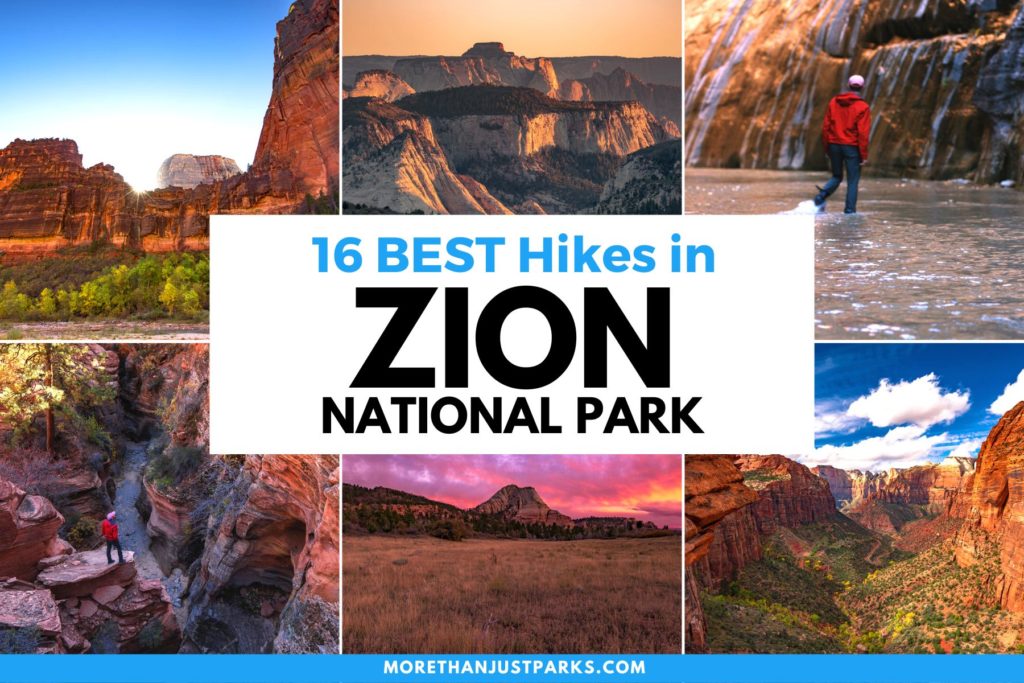
Map for Visiting Zion’s Trails
Ultimate Zion Itinerary 1 to 5 Days
Zion National Park Itinerary: 1 Day
If you only have one day to get it done, let’s try to fit as much in as possible.
Day 1
7:00 a.m.: Drive the Zion Scenic Byway. Stop at scenic vistas along the way. Take your time.
10:00 a.m.: Have a meal and explore Thunderbird Resort at Mt. Carmel Junction. Try the “Ho-Made Pies.”
12:00 p.m.: Take a Virgin River horseback ride. If the weather is extremely hot that day, start with the horseback ride.
2:00 p.m.: Take the shuttle to Stop #9 and enjoy the Temple of Sinawava and walk along the shaded portion of the Riverside Walk.
4:00 p.m.: Visit the Zion History Museum and walk the Pa’rus trail.
5:30 p.m.: Head to Kolob Canyons for the scenic drive and sunset viewing.
If you want to add more challenging hikes, choose between the Upper Emerald Pools Trail or continue on to The Narrows from the Riverwalk.

Zion National Park Itinerary: 2 Days
If you only have two days at Zion, go high and go low.
Day 1: Catch a sunrise at Zion Valley and then head to the history museum to learn about the landscape and history to appreciate the next leg of your tour. If you don’t have a permit to Angels Landing, the hike to Scout Overlook is worth the hike to get there.
Day 2: Canyoneering can be done on your own (with a permit) for experienced outdoor lovers, but you can also book a guided tour to help you along. Take a scenic drive and enjoy the sunset and night skies.
If you want to consider Angels Landing or The Narrows, here are two in-depth pieces we’ve created for you based on our experiences.
Zion National Park Itinerary: 3 Days
I like to call this the “Jump Right In” option.
Day 1: Ride (er… canyoneering) the Subway or The Narrows.
Day 2: Start the day at Canyon Overlook Trail for the sunrise. Take the Watchman Trail and then take the shuttle to see the Great White Throne if you’re a climber and the Temple of Sinawava if you just want to look at something really cool.
Day 3: I highly recommend you check out Kolob Canyons, and if you have the energy and skills, you can see the second-largest arch in the world, just three feet short of the record. Kolob Arch is 14 miles of grueling hiking and some rappelling, but also among the most untouched Utah wilderness. It’s also a great backup plan if you can’t make it to Arches National Park to see the longest arch in the world–Landscape Arch. That trail takes a full eight hours, but there are 3-4 hour trail options too.
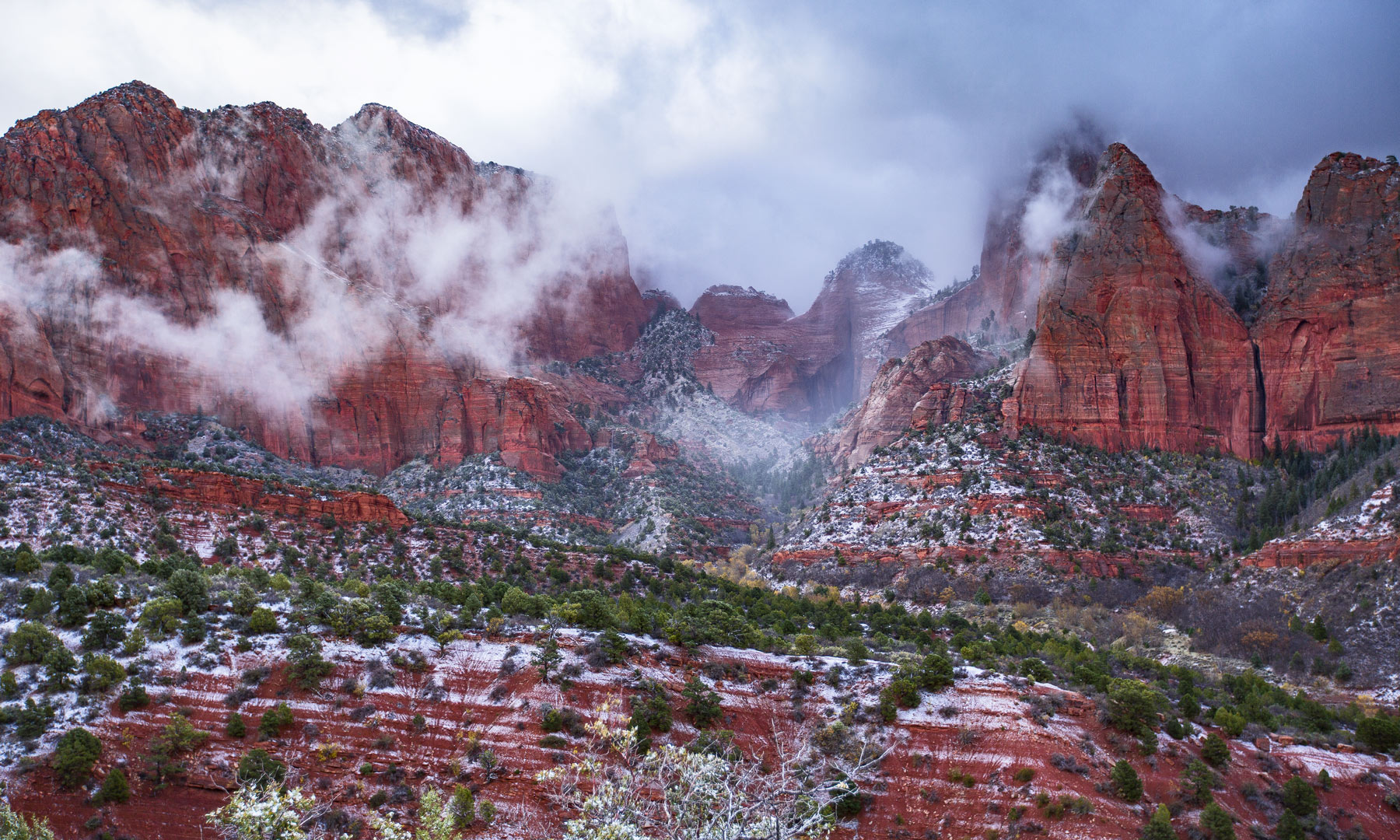
Zion National Park Itinerary: 4 Days
Day 1: Top Down route of The Narrows. Camping overnight is strongly recommended. Another option is to tackle the Subway on its grueling Top Down or Bottom Up option.
Day 2: West Rim Trail via Lava Point in Kolob Terrace. You might move this to Day 3 if you need time to adjust to the altitude, as Lava Point is nearly 8,000 feet high.
Day 3: Visit the Southwest Desert Trails or tackle Angels Landing if you’re up for it (and have a permit). Plan dinner around a stargazing night in the park.
Day 4: Experienced rappelers should consider Mystery Canyon or Pine Creek to get a different experience than the Narrows (and smaller crowds). Experience (or exhausted) visitors should see the Temple of Sinawava and take the Riverside Trail. Weeping Rock is a short but steep climb to a massive rockface that “weeps” with spring water.
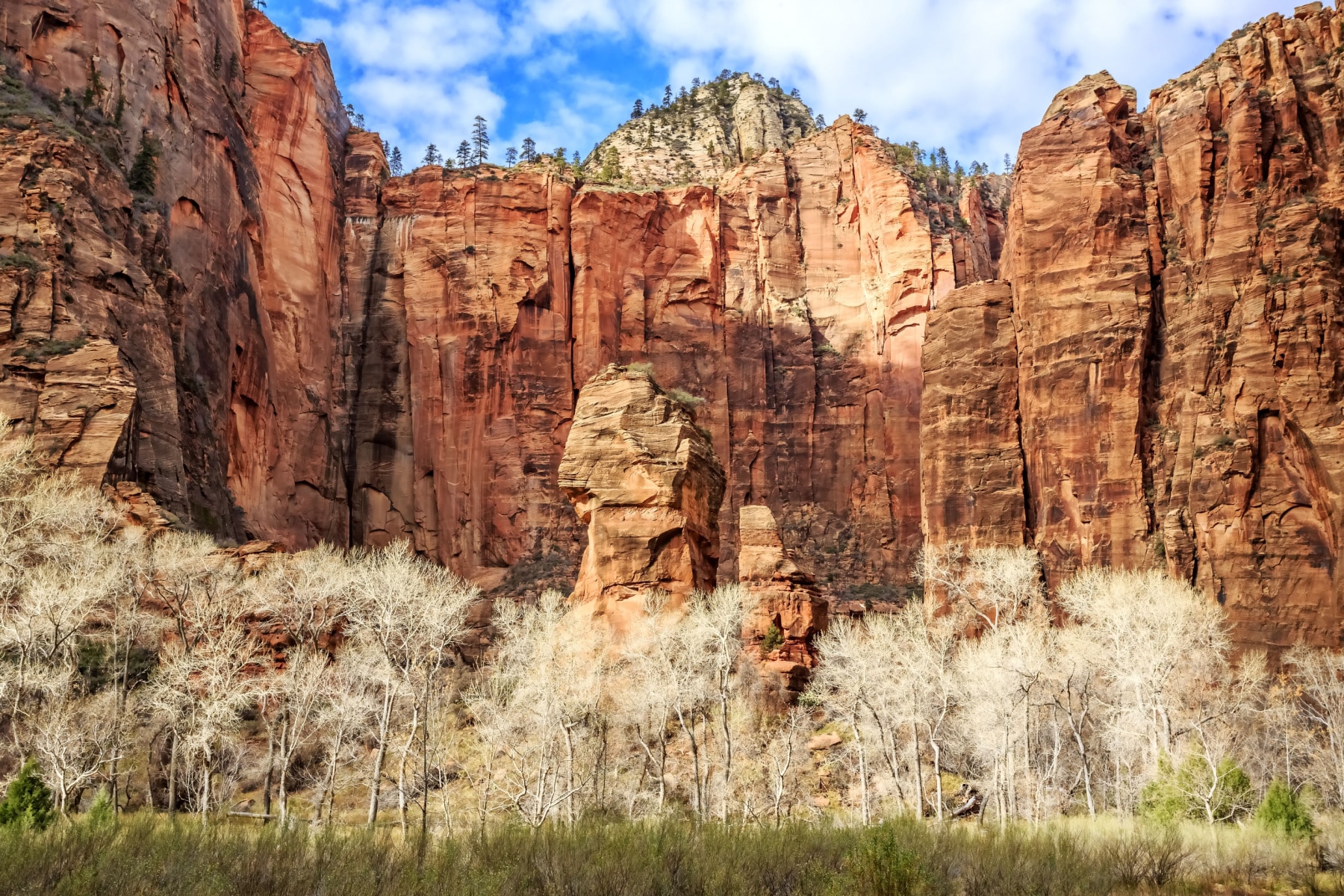
Zion National Park Itinerary: 5 Days
It helps that there are five sections to explore, so you can pick your trail(s) from the lists for each area.
Day 1: Zion Canyon Trails. Sunrise at the museum patio. The Narrows and Angels Landing are the most popular. Observation Point has the best view. Check the status of the East Rim Trail, as it might not be open due to a major rockfall.
Day 2: Kolob Canyon and/or Terrace. Get away from the crowds and plan an overnight wilderness camping experience.
Day 3: East Zion exploration day. Many Pools, Keyhole Canyon, and a horseback ride.
Day 4: Southwest Desert exploration day. You have two options, with distances up to 11.7 miles on the Chinle Trail and a shorter option of 3.6 miles on the Coalpits Wash Trail. Finish the day with a helicopter ride.
Day 5: East Rim Trail to Observation Point. Finish strong with the best view in Zion.

Visiting Zion Crowds and Concerns
As mentioned above, all of your plans for Zion must be flexible. Several permits, like Angels Landing and The Subway, require a lottery to get access. You might not know if you get that permit until the day before.

We Weren’t Joking about Zion Crowds
Is this the relaxing escape to Zion National Park you were seeking?
Visitation to the park has nearly doubled since 2010. That means nearly five million people visit each year.
Seek out the less-traveled routes. Try to get a backcountry permit, even if you just go a mile on the trail.
At the same time, storm damage and rockslides can lead to short or long-term closures. Even the best plan can go awry when an overnight storm hits, sending the Narrows above the 150 cfs allowance for visitor access.
Have a Zion itinerary, but don’t fall in love with it. Visiting Zion can break your heart but leave you wanting more time and time again. If you need a backup park, you have four more of the Mighty Five nearby.
Visiting Zion Using the Shuttle System
Two shuttle systems help escort people in and out of the park and around the top spots of the park. There’s a Springdale shuttle and a Zion Canyon shuttle.
Springdale Shuttle
Nine stops run from one end of Springdale, Utah, to the other, with a final stop near the pedestrian entrance to Zion’s south entrance. From there, you can walk to the first stop of the Zion Canyon Shuttle in just a few minutes.
Zion Canyon Shuttle
The free Zion shuttle doesn’t require a reservation, and it stops at nine locations in Zion Canyon. The full route goes from the Zion Canyon Visitor Center to the Temple of Sinawava in 45 minutes.
A few important notes:
- The last shuttle scheduled in a day is the last shuttle possibility. If the shuttle is full, you’ll be walking back to the visitor center in the dark.
- During shuttle season, which starts in late May and runs through late November, you cannot drive personal vehicles on Zion Canyon Scenic Drive. You can still drive the Zion-Mt. Carmel Highway during shuttle season.
- Shuttles for the holiday season in December are released by Zion a few months in advance.

Visiting Zion Itinerary Sunrises and Sunsets
You should work a sunrise and sunset, plus a view of the night skies, into your plan.
Sunrise in Zion
The best place for the sunrise is the easily accessible museum patio, which is set up for comfort and maximum viewing potential. This also serves as a great sunset or stargazing location.
Sunsets in Zion
Here are the best locations to see the sunset on the sandstone cliffs and see a colorful explosion that you can’t get any other time of day here.
- Pa’rus Trail
- South Campgrounds/Watchman Campgrounds
- Kolob Canyons Viewpoint

Stargazing in Zion
Since Zion is an International Dark Sky Park, there’s not a bad seat in the house for stargazing. You should avoid the trails after dark due to the risks unless you are at a backcountry campsite. The Visitor Centers, Zion History Museum, and Zion Lodge all have lighting designed to maximize the night sky in safe, easy-to-access areas.
TRAVEL TIP: Bring a flashlight with a red filter so you can see the ground and spot critters while not creating light pollution.

Additional Activities to Add to Zion Itineraries
You have so many things to consider when visiting Zion, such as:
- Backpacking: Stay overnight at one of the backcountry campsites and experience more of Zion.
- Bicycles/E-Bikes: Zion is a bicycle-friendly destination, and you can rent a bike in Springdale to explore the park.
- Canyoneering: This is not a good activity for first-timers unless you have an experienced guide and are confident in your physical ability. This is truly one of the best places on earth for canyoneering.
- Horseback Riding: The horseback tour through Zion will reach some places off the beaten path.
- Ranger Activities: Join a group on a ranger-led activity to get expert education about the novelties of Zion. Kids can also complete tasks to become Junior Rangers.
- Helicopter Tours: Save the steps and see Zion from above.
- Zipline (NEW IN 2023!!): Glide over Zion’s West Temple at speeds up to 70 miles per hour on the newest element of the park.
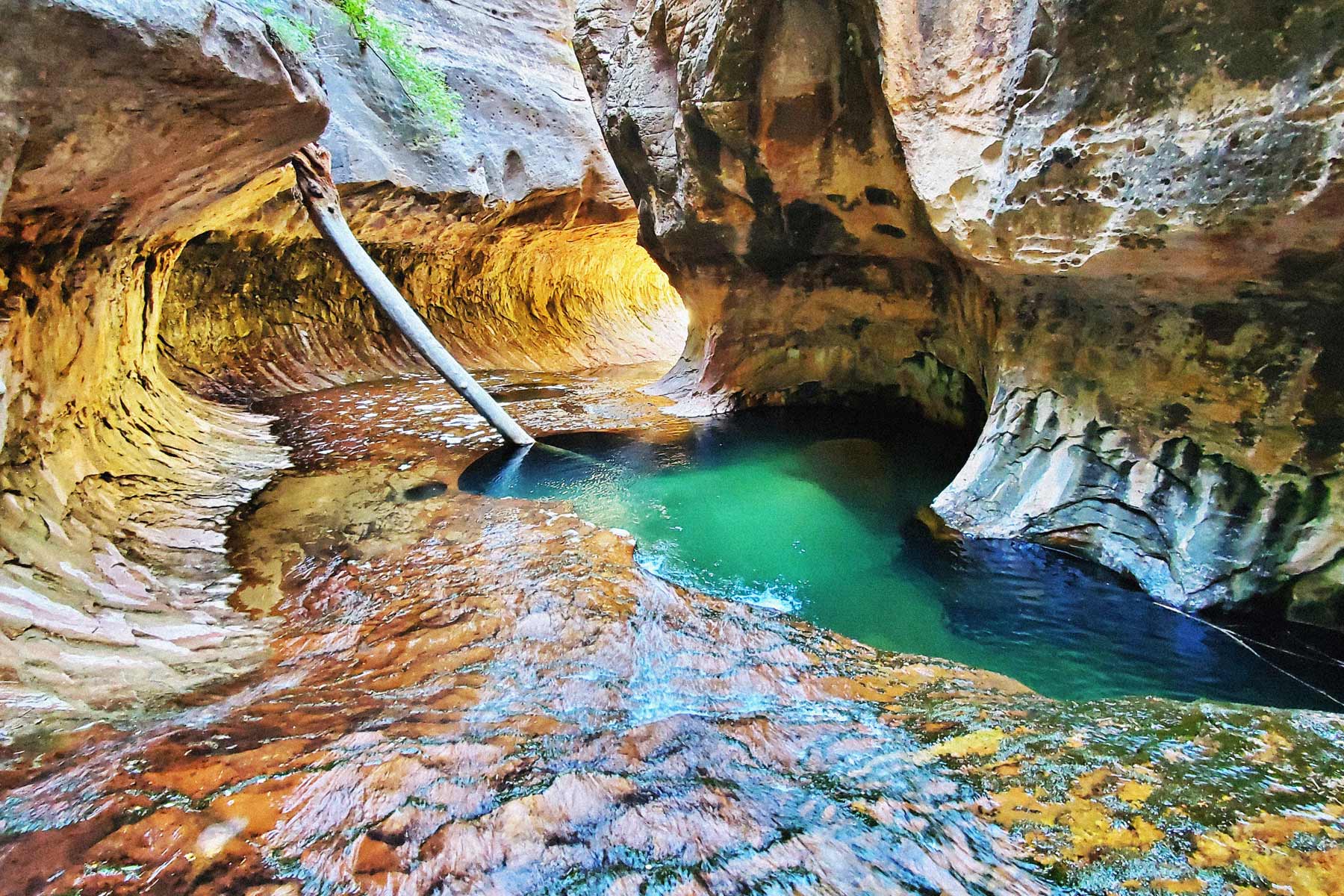
Visiting Zion National Park Planning FAQs
The south entrance is the main entrance. It’s the best as far as access, but the worst in terms of crowds. Enter by 9:00 a.m., according to park officials. I’d recommend being there by 7:00 a.m.
The east entrance is highly underrated, in my opinion. Keyhole Canyon gives you a similar experience to The Narrows. Many Pools trailhead (aka “The Twins,” “Route Canals”) is a good backup to Emerald Pools.
Kolob Canyons entrance is only for those who want to explore that part of the park. It’s not a secondary entrance to Zion Canyon.
The scenic byway is 54 miles along Route 9/Zion Mount Carmel Highway from La Verkin to Mt. Carmel Junction. At the speed limit, assuming no traffic backups or stops along the way, it will take 75 minutes. Plan for at least three hours if you want to stop along the way, and be prepared for the unavoidable tunnel backups during peak travel times.
Zion National Park lists trails from easy to moderate to strenuous. To get the best value for your time, the Lower Emerald Pool trail is just 1.2 miles long, and you get to see pools and waterfalls along the way. The Riverside Walk is a relatively flat 2.2-mile hike on the way to The Narrows.
Pa’rus Trail, Archeology Trail, Grotto Trail, Weeping Rock Trail, and Riverside Walk are among the other easy options. The Pa’rus Trail is the only one in the park where dogs are allowed.
You should know the Virgin River water risks and potential for cyanobacteria. You cannot boil or filter the water to make it healthy for consumption. Do not let pets be anywhere near the water of the Virgin River. This toxin can be deadly to dogs in just a few hours.
Pin Visiting Zion National Park: 1 to 5 Day Itinerary
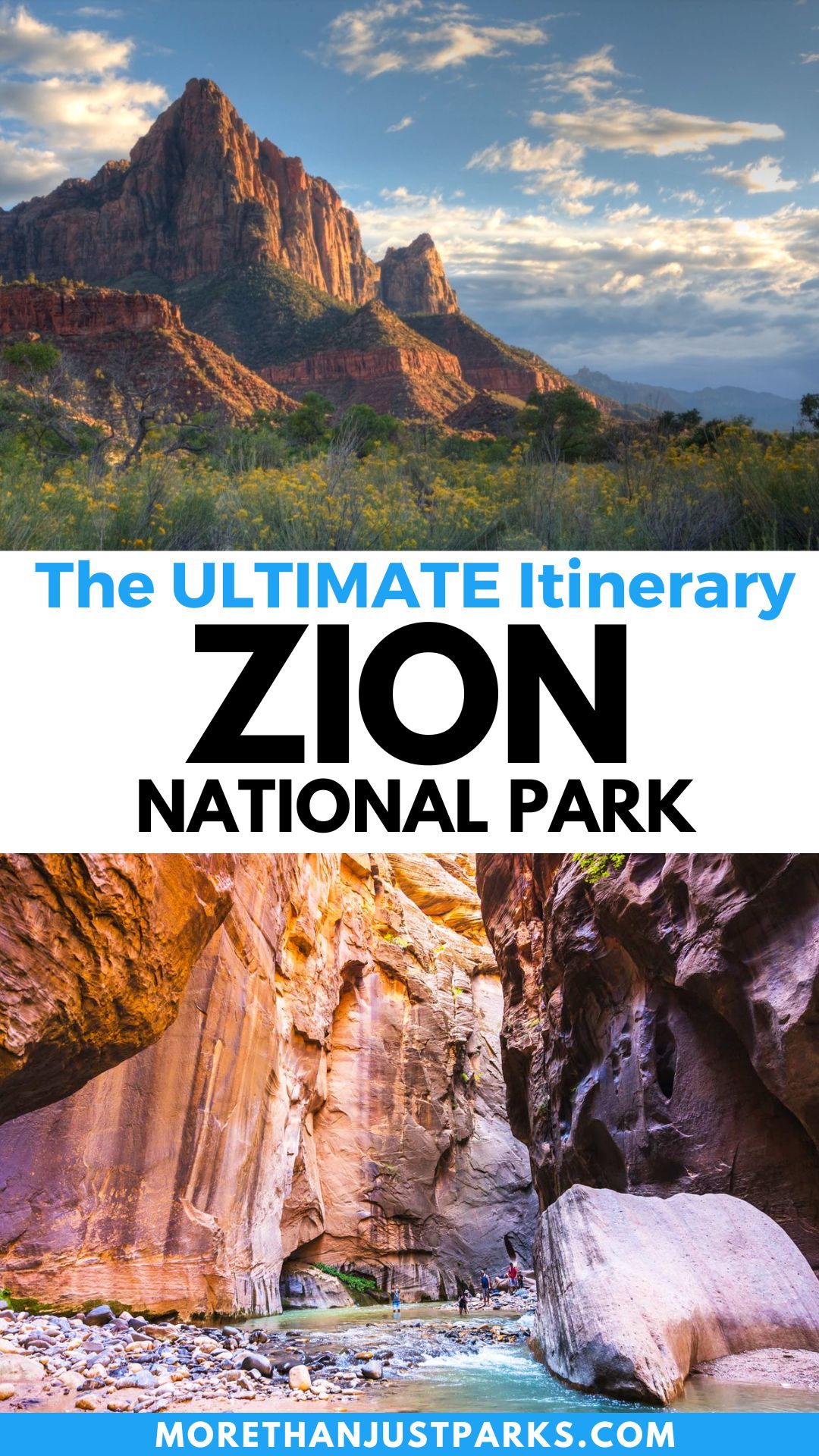

Helpful Related Links
Things to Do in Zion: 18 EPIC Things to Do in Zion National Park
Best Hikes in Zion: 16 EPIC Hikes in Zion National Park
The Narrows Hike in Zion: The Narrows Hike in Zion Isn’t For You. Here’s Why.
Things to Do Canyonlands: 20 Epic Things to Do in Canyonlands National Park
Things to Do in Arches: 17 Epic Things to Do in Arches National Park
Devils Garden Hike Arches: Hiking the Epic Devils Garden Trail in Arches
Things to Do Bryce Canyon: 20 Epic Things to Do in Bryce Canyon National Park
Things to Do Capitol Reef: 15 Best Things to Do in Capitol Reef National Park
Road Trip Essentials: 35+ ROAD TRIP ESSENTIALS (You’ll Love + Packing List)
Road Trip Planning Tools: 15 BEST FREE ROAD TRIP PLANNING Tools (& Apps) 2022
Zion National Park Guide: Ultimate Guide to Zion National Park
Utah National Parks Guide: 5 MIGHTY Utah National Parks Guide
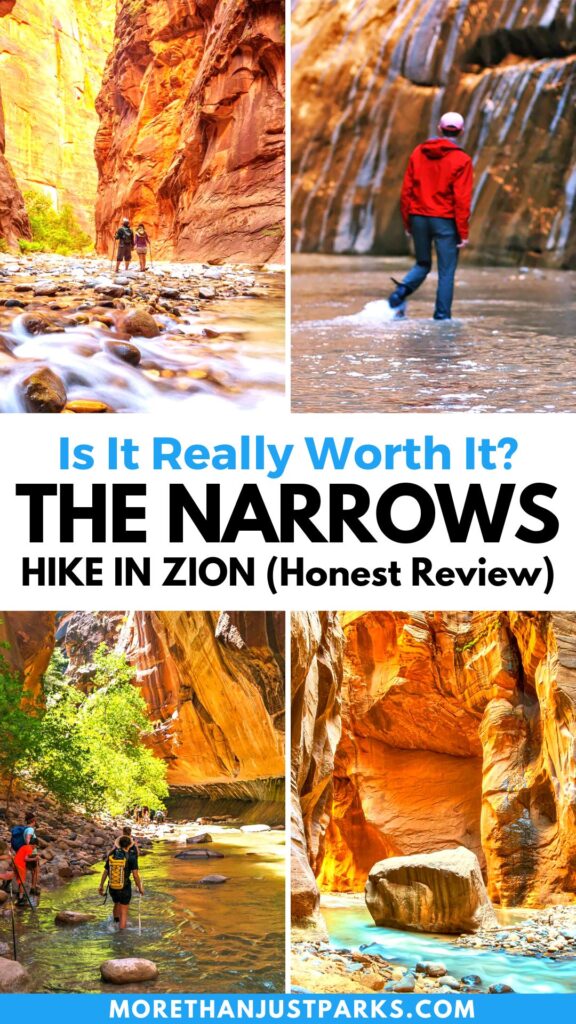
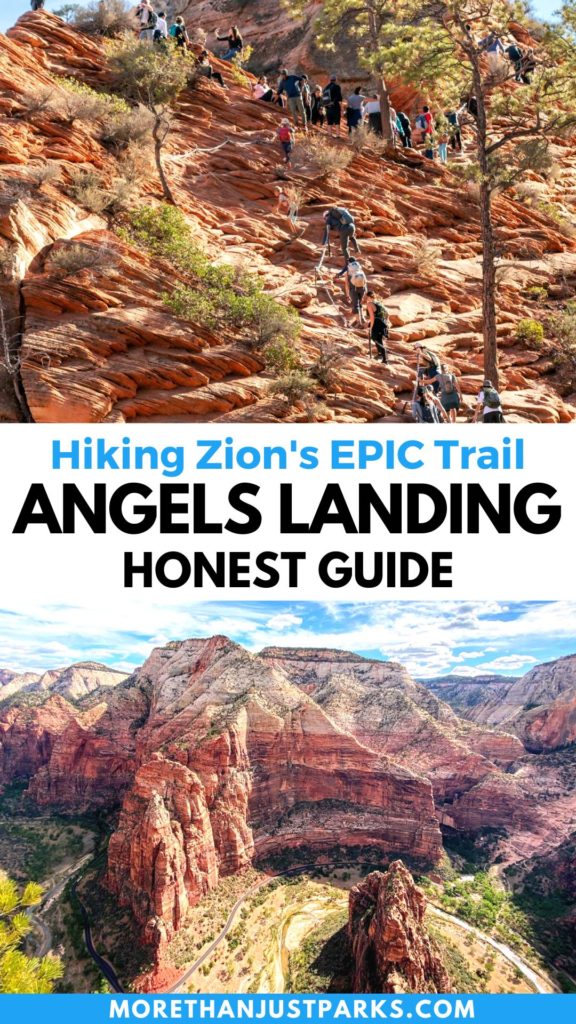

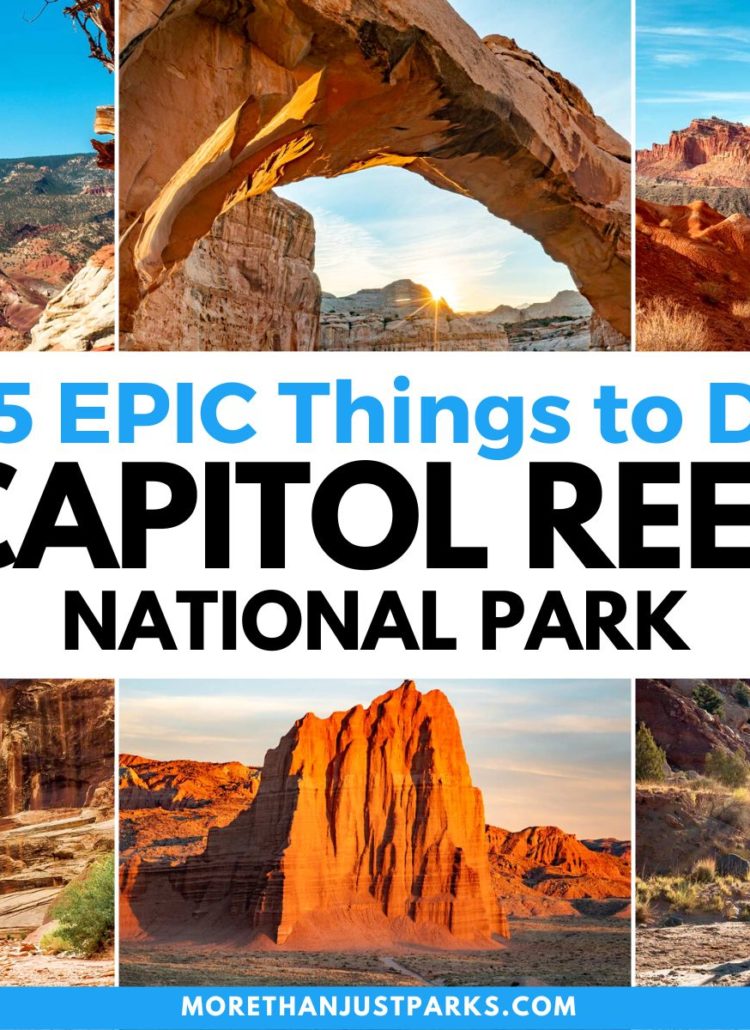

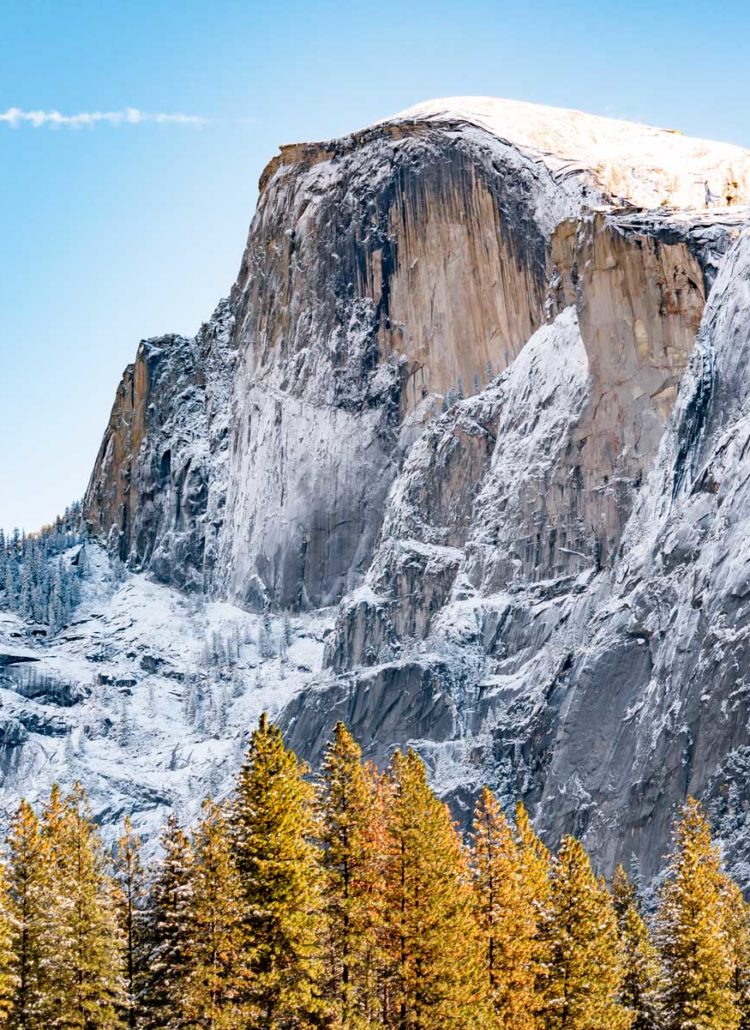


Leave a Reply